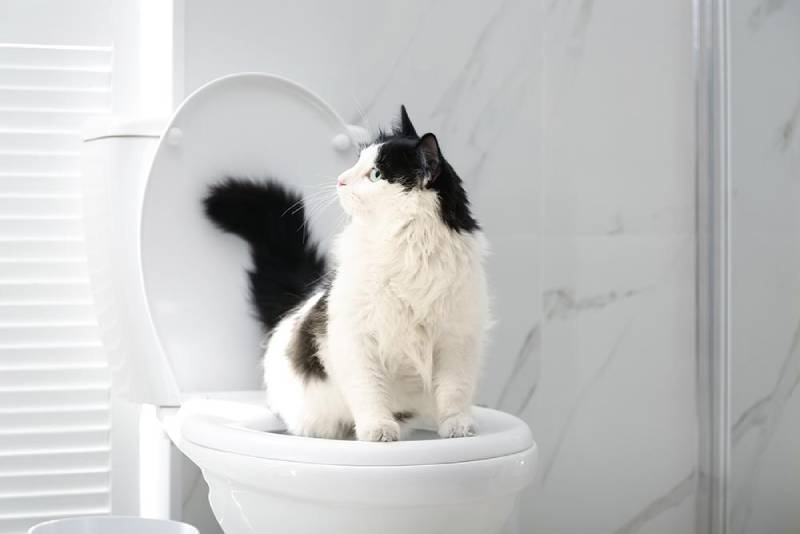What You Need to Avoid Flushing Animal Waste Down the Toilet
What You Need to Avoid Flushing Animal Waste Down the Toilet
Blog Article
We have found the article on Should you flush animal waste down the toilet down the page on the net and figured it made perfect sense to write about it with you over here.

When it concerns taking care of waste, particularly animal waste, many individuals usually resort to the convenient choice of flushing it down the bathroom. Nevertheless, this seemingly easy service can have severe repercussions for the environment and public health. In this post, we'll check out why flushing animal waste down the toilet is a poor idea and give alternative methods for proper disposal.
Intro
Proper garbage disposal is vital for keeping environmental sustainability and public health. While it may seem harmless to flush animal waste down the bathroom, it can lead to different problems, both for the atmosphere and human health.
Threats of flushing animal waste
Ecological impact
Flushing animal waste introduces harmful bacteria and virus into rivers, which can negatively impact water environments. These microorganisms can infect water sources and injury marine life, interrupting delicate ecosystems.
Public health concerns
Animal waste has harmful germs such as E. coli and Salmonella, which can present serious wellness risks to humans. Purging animal waste down the commode can contaminate water supplies, resulting in the spread of diseases and infections.
Alternatives to flushing
Instead of flushing pet waste down the commode, there are a number of alternate disposal techniques that are extra environmentally friendly and hygienic.
Composting
Composting pet waste is an environment-friendly means to throw away it. By composting, raw material is broken down right into nutrient-rich soil, which can be used to fertilize gardens and plants.
Garbage dump disposal
Disposing of animal waste in a land fill is one more alternative. While not as eco-friendly as composting, it is a more secure option to flushing, as it prevents the contamination of water sources.
Animal waste disposal systems
There are specialized animal garbage disposal systems readily available that securely and hygienically deal with animal waste. These systems commonly make use of enzymes to break down waste and get rid of odors.
Actions to proper animal garbage disposal
To ensure appropriate disposal of animal waste, follow these steps:
Scooping and bagging waste
Consistently scoop and bag animal waste using naturally degradable bags. This protects against waste from contaminating the environment.
Using designated waste bins
Dispose of bagged pet waste in assigned waste containers, such as garden compost containers or land fill containers. Stay clear of flushing it down the commode in all costs.
Cleaning can and animal areas on a regular basis
Regularly clean can and pet areas to avoid the build-up of waste and bacteria. Usage pet-safe cleaning items to preserve health.
Advantages of correct disposal methods
Embracing proper disposal approaches for animal waste offers several benefits:
Decreased environmental pollution
Appropriate disposal techniques lower the risk of environmental pollution, protecting waterways and environments from contamination
Minimized threat of water contamination.
By staying clear of flushing pet waste down the toilet, the threat of water contamination is considerably minimized, guarding public health.
Enhanced hygiene and health
Correct disposal methods promote much better sanitation and hygiene, developing a much safer setting for both humans and animals.
Final thought
Finally, purging animal waste down the toilet is hazardous to the setting and public health. By taking on alternative disposal approaches and complying with appropriate waste monitoring techniques, we can decrease the negative influence of animal waste and contribute to a cleaner, healthier world.
What To Do With Dog Poo – The Do's And Don'ts Of Disposing Of Faeces
Dog poo bins
Some councils provide dedicated dog waste bins in popular dog-walking areas that can take dog poo that has been bagged but you can legally dispose of dog waste in any public litter bin, as long as it is securely bagged. This also applies to your wheelie bin at home.
Do not flush
Water companies do not recommend flushing dog faeces down the toilet because certain parasites can survive the water processing treatment and are potentially harmful to humans. You should also never consider flushing dog poo that has been bagged down the toilet as the bags will not break down and instead create severe blockages in the sewage system.
In the woods
The Forestry Commission promotes a ‘stick and flick’ method for dealing with waste in the woods. This means finding a stick and using it to flick any poo from off the path so that it is out of the way of other walkers. You could also bury it as long as it is not in an area where there might be livestock.
Livestock
Parasites found in dog poo can be transmitted to livestock if they inadvertently eat infected faeces that has been left on grazing land. This could result in the death of sheep or abortion in cattle so you should always make sure you pick up your dog’s waste in fields where livestock could be present.

Hopefully you enjoyed reading our post on Why you should never flush dog poop down the toilet. Many thanks for taking a few minutes to browse our piece of content. Do you know about someone else who is enthusiastic about the niche? Take a moment to share it. Thanks for being here. Return soon.
Call Today Report this page